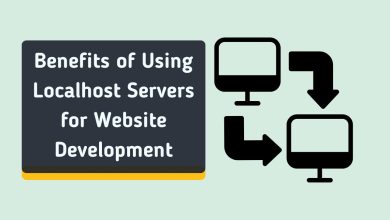The White Screen of Death in WordPress
The WordPress White Screen of Death (WSoD) is a common error that can occur when something goes wrong with your WordPress site.
Both PHP errors and database errors can manifest as a white screen, with no error message or other information displayed.
Before resorting to desperate measures, there are some reasons for the WordPress white screen of death:
A Plugin is causing compatibility issues
If you can access the administration screens, try deactivating all of your plugins and then reactivating them one by one. If you are unable to access your screens, log in to your website via FTP. Locate the folder wp-content/plugins and rename the plugin folder plugins_old. This will deactivate all of your plugins. You can read more about manually deactivating your plugins in the Troubleshooting FAQ.
Your Theme may be causing the problem.
This is especially likely if you are experiencing the white screen of death after you have just activated a new theme or created a New Site on a WordPress Network. Log in to the Administration Screens and activate the default WordPress Twenty Sixteen Theme. If you can’t access your Administration Screens, access your website via FTP and navigate to the /wp-content/themes/ folder. Rename the folder to the active Theme.
Your Theme directory may be missing or renamed.
This is common for developers who have just created a local development environment and cloned the database, which is pointing to a theme (or theme directory) that might be missing or renamed. To test this solution, try accessing wp-login.php or /wp-admin/. If you see anything, this is a good indication it’s theme-related. Log in as an administrator, then try to view the front end, and you should see a WordPress error message that the theme directory “{theme-name}” does not exist.
Memory limit exceeded
If your WordPress site is trying to use more memory than is allowed by your hosting provider, this can also trigger the WSoD.
How to Troubleshoot White Screen of Death Issue on WordPress
If you are experiencing the WSoD on your WordPress site, there are a few things you can try to fix it:
Check your error logs: Your WordPress site generates error logs that can help you identify the cause of the WSoD. To access your error logs, go to your WordPress dashboard and navigate to Tools > Site Health > Info. Then, click on the Debug tab to view your error logs.
Disable your plugins: If you are unable to identify the cause of the WSoD from your error logs, you can try disabling all of your plugins to see if that resolves the issue. To do this, go to your WordPress dashboard and navigate to Plugins. Then, click on the Deactivate checkbox next to each plugin.
Switch to a default theme: If disabling your plugins does not fix the WSoD, you can try switching to a default WordPress theme. To do this, go to your WordPress dashboard and navigate to Appearance > Themes. Then, click on the Activate button next to a default theme, such as Twenty Twenty-Three.
Increase your memory limit: If you are confident that your WordPress site is exceeding its memory limit, you can try increasing it. To do this, open your wp-config.php file and add the following line:
define('WP_MEMORY_LIMIT', '256M');Contact your hosting provider: If you have tried all of the above steps and the WSoD persists, you may need to contact your hosting provider for further assistance.
The WP_DEBUG feature often provides additional information. If you are still experiencing problems and are looking at your error logs, you can check out the PHP errors.
Conclusion
It is important to note that the WSoD can be caused by a variety of factors, so there is a fixed or universal solution that can deal with all types of issues. However, the troubleshooting steps above should help you to identify and fix the cause of the error on your WordPress site. If you need professional support to fix this issue or any other WordPress related problems you can contact us.
Also Check Out: How to Increase the PHP Memory Limit in WordPress

